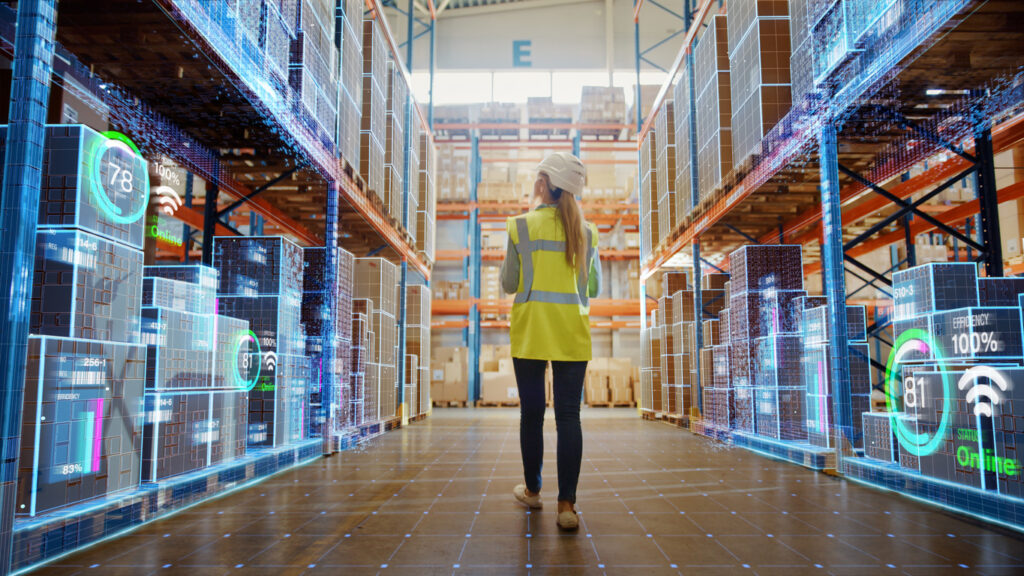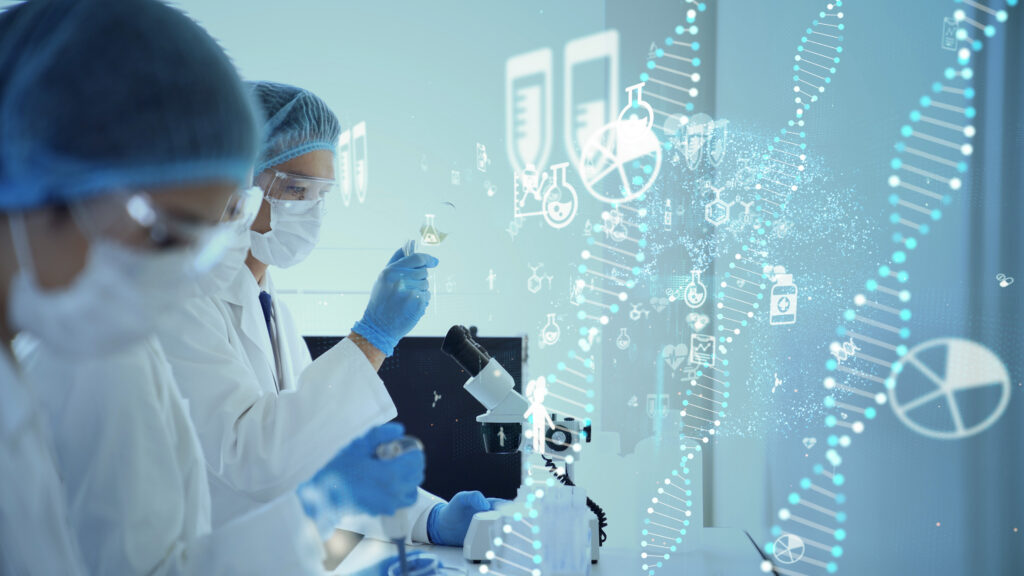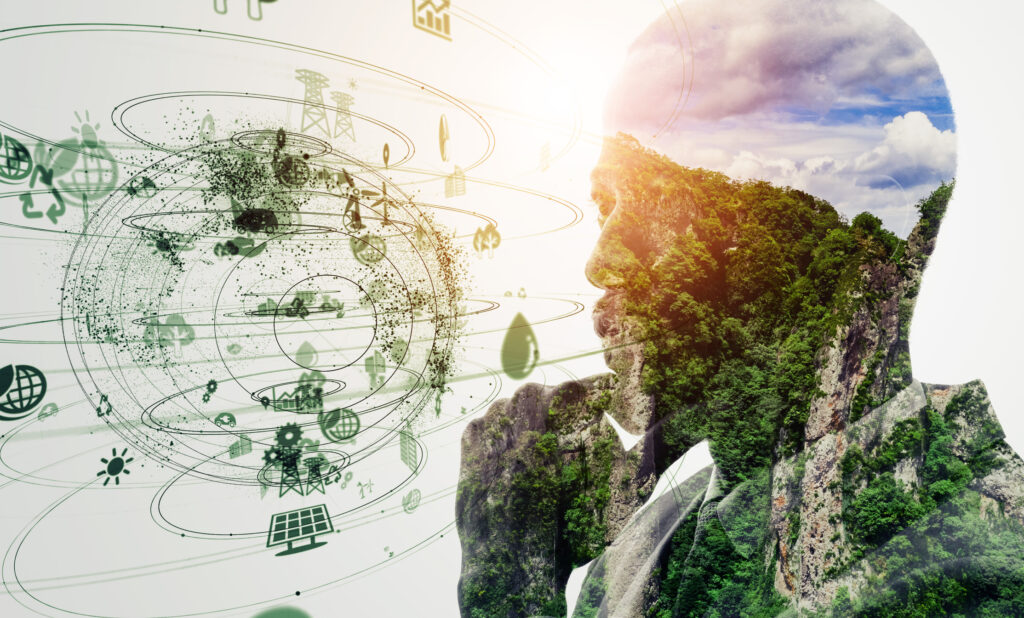
By Liam Smith
Imagine you wake up in the year 2030. How will technology have changed the performance chemical and personal care industries?
Today, it is hard to overstate the central role of chemical innovation in our lives and society. The discoveries and products developed by the chemical industry underpin our way of life and drive modern industry, with 96% of manufactured goods depending on their use.1 But should we expect the same in 2030?
Fuelled by the expanding global population, the World Economic Forum expects demand for chemicals and materials to quadruple by 2050. Yet at the same time, the industry is also central to decarbonisation efforts to meet the global target of a maximum 1.5 °C temperature increase by 2050.2 As the industry looks to grapple with these global megatrends, how novel technologies and innovations are applied play a key part in what deciding what our 2030 reality could look like.
Let’s take a look at how these technologies could transform the personal care and performance chemicals sectors.
Which technologies will have the biggest impact?
It might feel like science fiction, but AI and machine learning are already a huge part of our day-to-day lives. After waking up, you might ask your smart speaker to check the weather forecast. Or, at lunchtime, you might open a social media app, where AI- and machine learning-enabled programmes are carefully curating the adverts and posts you engage with.
Public excitement over how these technologies are starting to impact our lives has been seen in the emergence of ChatGPT, an AI chatbot that can generate human-like responses to a wide range of questions and prompts.3 In a future where these technologies will likely play such an essential role, failing to keep up to date will put companies at a disadvantage. As such, chemical companies must start to consider these issues now to prepare their businesses for the future.
Looking ahead, we’ll likely see AI technologies push research and development towards leveraging larger and more detailed data sets to identify trends and draw conclusions.4 By applying statistical models based on AI for data analysis, chemists will be able to spot numerical patterns, learn from input functions, and find anomalies in the data’s output. The potential for digital technologies in this area will lead to enhanced results in future, as AI can bypass human error and solve complex problems with a speed and consistency that far exceeds the limits of human intelligence.5
By 2030 we’ll likely witness the combination of these digital AI tools with new advances and discoveries within scientific sectors. Today, this is already impacting the chemical and biochemical sciences, providing a tool to uncover hidden structure-property relationships.
For example, in active ingredient discovery and development, molecular simulation is being used to predict the structure, dynamics, and interactions of a candidate molecule, sharing insight into the chemical behaviour that drive functional properties. This multidisciplinary approach could alter our 2030 reality by allowing personal care developers to better leverage consumer trends for product inspiration, driving quicker and more cost-efficient product development.
In a recent Japan-based research project, AI-powered molecular simulation technologies were used to develop an enhanced cleansing agent. This ingredient has an increased ability to remove makeup, allowing customers to clean their skin more thoroughly using less water and therefore meeting the mounting consumer demand for environmentally friendly products.6

The role of digital technologies in business innovation
As modern digital technology evolves, its initial focus will be increasing productivity across a wide range of industries. However, it will also have the potential to support the development of new business models and systems of production.7
Among other effects, this will be due to the greater availability of real-time information as processes take place.8 Technologies such as blockchain and information of technology (IoT), based on data sharing, are also likely to facilitate easier information access within the chemical industry.8, 9 This will also create better security in sharing information, a concern many companies may face when integrating digital and technological innovations into existing processes.
Additionally, increasingly sophisticated data-sharing technologies will enable domain knowledge from multiple sources to be assembled on one platform.1 This will accelerate innovation through enhanced knowledge sharing and making information accessible to users all over the world.3 Moreover, enabled by AI, real-time information availability has the potential to improve pattern recognition, change decision-making procedures and increase performance transparency. Greater automation will also change the way chemical companies think about complexity and scale.7

How will these developments affect the regulatory landscape?
Carbon underpins the chemical industry. As the climate threat becomes more urgent, governments and regulatory bodies are introducing new regulations to reduce carbon emissions. For example, in December 2022, the European Commission published new target emission standards for 34 of the key air pollutants emitted from the chemical industry sector, including stricter binding levels for volatile organic compounds (VOCs).10
With technology becoming a major part of other industry sectors, it is not inconceivable to think it will also play a vital role in the fight for a more sustainable future.10 From measuring and quantifying levels of greenhouse gases to forecasting their effects on sea level or atmospheric temperatures, predictive technologies will be key in obtaining data to help decide the right mitigation methods necessary to reach IPCC targets.
For specific industries, AI and machine learning could be essential in many areas. For delivery drivers, it could be leveraged to calculate the optimal routes to take that will reduce carbon emissions and particulate matter on the roads. It could also be used by manufacturing plants to improve processes, increase efficiency, and drive down a company’s total carbon footprint.

What does this mean for the personal care and performance chemical industries?
In personal care, AI and machine learning tools will likely have the greatest impact on new product development (NPD) managers. At the intersection of business, formulation and manufacture, cosmetic NPDs work right through the pipeline from product conception to post-launch communications. As such, there are many points along the way where AI could be leveraged to either enhance their workflow or reduce the number of hours workers spend carrying out menial tasks. By freeing up the time of skilled workers such as formulation scientists, it’s likely the market will see a boom in more innovative personal care products.
In performance chemicals, the area that AI is likely to affect the most is the manufacturing supply chain. From machines that will be able to self-optimise production, reducing waste and by-product formation, to programmes that can take precautionary safety measurements or predict the consumer demand for certain chemicals, AI will transform the global supply chain. Overall, this will boost innovation in the sector, increase supply chain security, and hopefully drive down any instances of product recall or shortage.

Looking towards a better future
Technological developments present many opportunities for innovation, with AI and data-sharing systems accelerating process development, adaptability, and efficiency. However, to access these opportunities, both chemical companies and regulatory bodies must adapt quickly to keep up-to-date and future-proof their businesses. In this rapidly shifting landscape, flexibility and optionality will become increasingly significant in giving companies a competitive edge. The way companies approach outsourcing, particularly for administrative functions, will likely change to maximise adaptability.7
Sustainability is central to developments in processes and technology. With the climate crisis at the forefront of the global agenda, new technologies will continue to be developed and implemented to optimise process efficiency and sustainability.
However, technology is only one piece of the puzzle in a range of factors driving change within the performance chemical and personal care sectors. In the year 2030, the industry’s workforce and infrastructure will also look very different.
How do you think it will change? Watch this space for further articles exploring the future of performance chemicals and personal care.
References
- Chemical Industry Association. (2023) https://www.cia.org.uk/Media-Centre/Details/Chemical-Industry-gives-cautious-welcome-to-Governments-business-support-package- (Accessed March 2023].
- World Economic Forum. (2023) https://www.weforum.org/press/2021/10/global-chemical-companies-collaborate-in-pivotal-move-to-net-zero/ (Accessed March 2023].
- Chemical Industry Journal. (2023). Future Trends for the Chemical Industry. [Online]. Chemical Industry Journal. Available at: https://www.chemicalindustryjournal.co.uk/future-trends-for-the-chemical-industry [Accessed March 2023].
- Future Learn. (2021). The differences between data analytics, machine learning and AI. [Online]. Future Learn. Last updated: 29 January 2021. Available at: https://www.futurelearn.com/info/blog/differences-data-analytics-machine-learning-ai [Accessed March 2023].
- Shankland. S. (2022). Why We’re Obsessed With the Mind-Blowing ChatGPT AI Chatbot. [Online]. CNET. Last updated: 19 February 2023. Available at: https://www.cnet.com/tech/computing/why-were-all-obsessed-with-the-mind-blowing-chatgpt-ai-chatbot/ [Accessed March 2023].
- Eagan, C. (2023). AI: A Remedy for Human Error? [Online]. Tech Native. Available at: https://technative.io/ai-a-remedy-for-human-error/ [Accessed April 2023].
- Personal Care Insights (2023) https://www.personalcareinsights.com/news/kirin-holdings-ai-and-molecular-simulation-collab-double-cleansing-is-the-key-to-beautiful-skin.html [Accessed March 2023].
- Amazon. (2023). What is Blockchain Technology? [Online]. Amazon. Available at: https://aws.amazon.com/what-is/blockchain/?aws-products-all.sort-by=item.additionalFields.productNameLowercase&aws-products-all.sort-order=asc [Accessed March 2023].
- Gillis, A. S. (2022). What is the internet of things (IoT)? [Online]. TechTarget. Last updated: March 2022. Available at: https://www.techtarget.com/iotagenda/definition/Internet-of-Things-IoT [Accessed March 2023].
- European Commission. (2023). New environmental norms to make chemical and textile industry plants greener. [Online]. European Commission. Available at: https://joint-research-centre.ec.europa.eu/jrc-news/new-eu-environmental-norms-make-chemical-and-textile-industry-plants-greener-2023-01-13_en [Accessed March 2023].
- Minevich, M. (2022). How To Fight Climate Change Using AI. [Online]. Forbes. Available at: https://www.forbes.com/sites/markminevich/2022/07/08/how-to-fight-climate-change-using-ai/?sh=51c6f1ea2a83 [Accessed April 2023].